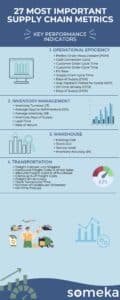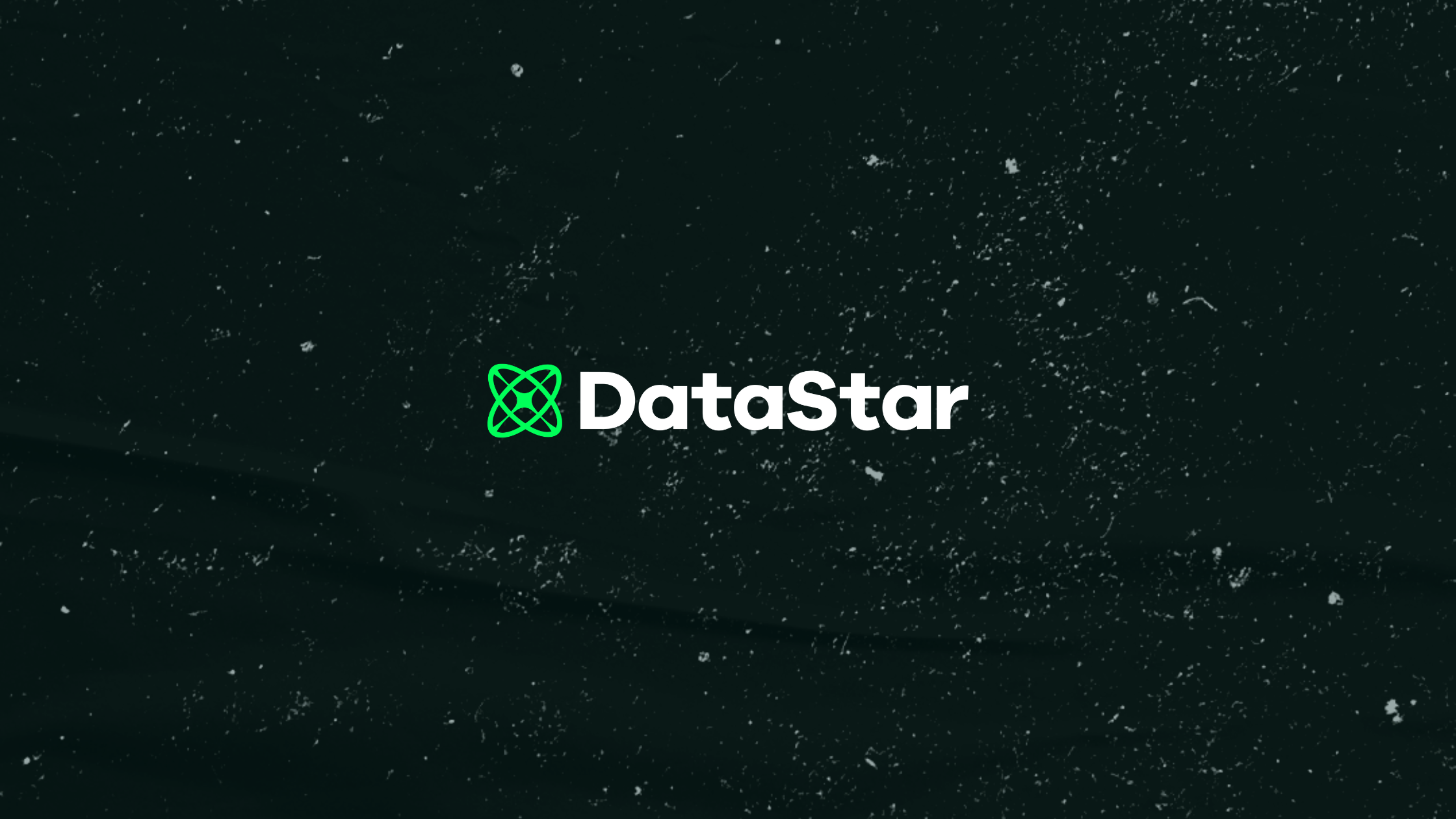
There’s been a lot of talk recently about “continuous supply chain design” from planning vendors. The problem is the technology they are touting is a parlor trick. Here’s how true continuous supply chain design works and how to take the first step.
Published by
Freeman Barber
Published on
December 10, 2024





JTVCYXV0aG9yX2luZm8lNUQ=You may have heard the term “continuous supply chain design” tossed around by planning vendors. The problem is the technology planning vendors are touting has existed for years and is a parlor trick. Here’s how true continuous supply chain design works and how to take the first step.
Continuous supply chain design is an organizational structure where teams use modeling technology to continuously evaluate how to change the supply chain network at strategic, tactical, and operational levels. This analysis is a series of projects about the current and future environment that company is facing. The supply chain design solution creates numerous future-state supply chain designs and can automatically generate hundreds or thousands of sensitivity scenarios at the click of a button. This means analysts can evaluate the entire spectrum of possibilities to select the most impactful solution. This is very distinct from what a planning system does: planning uses today's data to determine the most efficient way to run the current supply chain.https://youtu.be/gZGHZvBrw4E?si=AvlAfNsRxkT8cCSg
Continuous supply chain design as defined by planning vendors is flowing data from the planning system to a network design module. This isn’t new. SAP APO started doing this 15 years ago by directing data into its network optimization (NO) engine. If you populate NO with current state data, all you’re doing is current-state modeling. What’s more, this approach is more of an automatic data import-export parlor trick than a way to answer a critical business question. Design isn’t about optimizing the current network. If you don’t add new alternatives, you don’t do any better than the as-is. Pretty boring, right? Supply chain design welded to a supply chain planning system blinds you to future possibilities and limits degrees of freedom.
When evaluating overall supply chain performance, tracking a comprehensive set of KPIs that provide a holistic view is essential. As a supply chain executive, manager, or supervisor, it’s imperative to remain focused and proactive--not reactive--as one issue in one of the echelons can easily cascade to other areas and derail the process.Choosing and modeling the right supply chain KPIs is crucial for optimizing performance and achieving strategic goals. Optilogic’s supply chain design platform enables you to effectively manage supply chain outcomes.

Image Source: Someka
By its nature, design is a people-based function. That is, it requires human thinking and interaction. Design isn't possible to do as a completely automated function. The modeling technology automates parts of the process to speed up and simplify design, but selecting the best design depends on conscious analysis of trade-offs across cost, service, risk, and sustainability factors.
As the new leaders in supply chain design, we agree that continuous design is critical. Companies should always be looking at how to make the current network more efficient and evaluating future-state supply chain designs. Design makes the leap from current system data to what’s possible—even if the data isn’t in your current system.

When a planning system says they have design “bolted on”, be very wary. Design is accelerating the technology, people, and processes required to ask questions about potential new ways of operating: new lanes, new suppliers, and how to tackle new environments and challenges. And doing this constantly to stay ahead of the market.
Gerdau uses network optimization and simulation technologies in the Optilogic Cosmic Frog supply chain design solution for their S&OP planning process. Optimization is used to aid in production planning and decision making on where and when to build prebuild inventory within their network. This enables them to navigate supply and demand fluctuations. They use Cosmic Frog to gain insights on optimal sites to meet a particular customer's demand. Simulation is leveraged to help model and test different production schedules/processes and to also assess impacts of potential disruption scenarios. iGPS leverages a planning by design tailored application to incorporate strategic network design into their monthly process by evaluating near/mid-term future demand to identify the optimal flow path volume through their network. By leveraging continuous design practices that enable their team to make better decisions via the power of optimization scenario results, iGPS improves cost and service metrics. PECO couples optimization and simulation in Cosmic Frog to support monthly network design efforts. Optimization identifies high impact customer reassignments and provides inventory rebalancing suggestions subject to operational constraints. Optimization outputs and key historical datasets are used to build a detailed simulation model which proactively describes the impacts of supply and demand variability on customer service, highlights areas with expected surplus or deficit inventory, and enables identification of operational bottlenecks.
There are numerous supply chain models that are re-run periodically and look at the current network and reveal new possibilities for improvement. These models flow data in from the planning system and are rerun automatically to solve transportation routing design, inventory strategy, multi-time period problems, and more. We call this “planning by design” because it uses design data to answer a planning question. Planning by design models leverage Optilogic’s flexible platform and automate the process to run periodically, using the data and the model appropriate for the question you need to answer.
Thinking about getting started with a “continuous” process can be overwhelming. So just take it one step at a time and lean on the experts for help as you progress! Here are some ways to get your team started:
JTNDcCUzRSUzQ2RpdiUyMGNsYXNzJTNEJTIyaHMtY3RhLWVtYmVkJTIwaHMtY3RhLXNpbXBsZS1wbGFjZWhvbGRlciUyMGhzLWN0YS1lbWJlZC0xNDg2NTMxNDA2MDklMjIlMEElMjAlMjBzdHlsZSUzRCUyMm1heC13aWR0aCUzQTEwMCUyNSUzQiUyMG1heC1oZWlnaHQlM0ExMDAlMjUlM0IlMjB3aWR0aCUzQTE2MDBweCUzQmhlaWdodCUzQTQwMHB4JTIyJTIwZGF0YS1odWJzcG90LXdyYXBwZXItY3RhLWlkJTNEJTIyMTQ4NjUzMTQwNjA5JTIyJTNFJTBBJTIwJTIwJTNDYSUyMGhyZWYlM0QlMjJodHRwcyUzQSUyRiUyRmN0YS1zZXJ2aWNlLWNtczIuaHVic3BvdC5jb20lMkZ3ZWItaW50ZXJhY3RpdmVzJTJGcHVibGljJTJGdjElMkZ0cmFjayUyRnJlZGlyZWN0JTNGZW5jcnlwdGVkUGF5bG9hZCUzREFWeGlnTEpEa1FPMUllTjRPZkdLWEZRd0JWNzhEM0ZxZXdldVU3d0RGVk1VemxnaXNzTDNPRmhGZURQUkd2Y05HY0RJaXlyQ0dUZm1mVTYzbXRXanJINXMxTGI1N3NhdzFtMDl1b1MlMjUyQmFzTnVpb2dXQmZkakNzOHRTTiUyNTJCUlMzYVpoamZJc25DempEbDFBU2FKSVVUZFclMjUyRkdhMyUyNTJCNWRGRGV1bjVEbERxQnp4TVNCTnllNXMybUZzbG1Zb3FORW83U3pGSkZhWDVrNTlkNDBjY1FZdGlNemdoc1phTmNKQ0cwMTJkWjBjcFglMjUyQndGTFlYeTFoOXFzRyUyNTJCdXFUUkQySDVwZ2kzbVJFNElRem9pbyUyNTNEJTI2d2ViSW50ZXJhY3RpdmVDb250ZW50SWQlM0QxNDg2NTMxNDA2MDklMjZwb3J0YWxJZCUzRDcxMjU1OTIlMjIlMjB0YXJnZXQlM0QlMjJfYmxhbmslMjIlMjByZWwlM0QlMjJub29wZW5lciUyMiUyMGNyb3Nzb3JpZ2luJTNEJTIyYW5vbnltb3VzJTIyJTNFJTBBJTIwJTIwJTIwJTIwJTNDaW1nJTIwYWx0JTNEJTIyQm9vayUyMEElMjBEZW1vJTIwLSUyMENGJTIyJTIwbG9hZGluZyUzRCUyMmxhenklMjIlMjBzcmMlM0QlMjJodHRwcyUzQSUyRiUyRm5vLWNhY2hlLmh1YnNwb3QuY29tJTJGY3RhJTJGZGVmYXVsdCUyRjcxMjU1OTIlMkZpbnRlcmFjdGl2ZS0xNDg2NTMxNDA2MDkucG5nJTIyJTIwc3R5bGUlM0QlMjJoZWlnaHQlM0ElMjAxMDAlMjUlM0IlMjB3aWR0aCUzQSUyMDEwMCUyNSUzQiUyMG9iamVjdC1maXQlM0ElMjBmaWxsJTIyJTBBJTIwJTIwJTIwJTIwJTIwJTIwb25lcnJvciUzRCUyMnRoaXMuc3R5bGUuZGlzcGxheSUzRCUyN25vbmUlMjclMjIlMjAlMkYlM0UlMEElMjAlMjAlM0MlMkZhJTNFJTBBJTNDJTJGZGl2JTNFJTBBJTNDJTJGcCUzRQ==
JTVCYXV0aG9yX2luZm8lNUQ=You may have heard the term “continuous supply chain design” tossed around by planning vendors. The problem is the technology planning vendors are touting has existed for years and is a parlor trick. Here’s how true continuous supply chain design works and how to take the first step.
Continuous supply chain design is an organizational structure where teams use modeling technology to continuously evaluate how to change the supply chain network at strategic, tactical, and operational levels. This analysis is a series of projects about the current and future environment that company is facing. The supply chain design solution creates numerous future-state supply chain designs and can automatically generate hundreds or thousands of sensitivity scenarios at the click of a button. This means analysts can evaluate the entire spectrum of possibilities to select the most impactful solution. This is very distinct from what a planning system does: planning uses today's data to determine the most efficient way to run the current supply chain.https://youtu.be/gZGHZvBrw4E?si=AvlAfNsRxkT8cCSg
Continuous supply chain design as defined by planning vendors is flowing data from the planning system to a network design module. This isn’t new. SAP APO started doing this 15 years ago by directing data into its network optimization (NO) engine. If you populate NO with current state data, all you’re doing is current-state modeling. What’s more, this approach is more of an automatic data import-export parlor trick than a way to answer a critical business question. Design isn’t about optimizing the current network. If you don’t add new alternatives, you don’t do any better than the as-is. Pretty boring, right? Supply chain design welded to a supply chain planning system blinds you to future possibilities and limits degrees of freedom.
When evaluating overall supply chain performance, tracking a comprehensive set of KPIs that provide a holistic view is essential. As a supply chain executive, manager, or supervisor, it’s imperative to remain focused and proactive--not reactive--as one issue in one of the echelons can easily cascade to other areas and derail the process.Choosing and modeling the right supply chain KPIs is crucial for optimizing performance and achieving strategic goals. Optilogic’s supply chain design platform enables you to effectively manage supply chain outcomes.

Image Source: Someka
By its nature, design is a people-based function. That is, it requires human thinking and interaction. Design isn't possible to do as a completely automated function. The modeling technology automates parts of the process to speed up and simplify design, but selecting the best design depends on conscious analysis of trade-offs across cost, service, risk, and sustainability factors.
As the new leaders in supply chain design, we agree that continuous design is critical. Companies should always be looking at how to make the current network more efficient and evaluating future-state supply chain designs. Design makes the leap from current system data to what’s possible—even if the data isn’t in your current system.

When a planning system says they have design “bolted on”, be very wary. Design is accelerating the technology, people, and processes required to ask questions about potential new ways of operating: new lanes, new suppliers, and how to tackle new environments and challenges. And doing this constantly to stay ahead of the market.
Gerdau uses network optimization and simulation technologies in the Optilogic Cosmic Frog supply chain design solution for their S&OP planning process. Optimization is used to aid in production planning and decision making on where and when to build prebuild inventory within their network. This enables them to navigate supply and demand fluctuations. They use Cosmic Frog to gain insights on optimal sites to meet a particular customer's demand. Simulation is leveraged to help model and test different production schedules/processes and to also assess impacts of potential disruption scenarios. iGPS leverages a planning by design tailored application to incorporate strategic network design into their monthly process by evaluating near/mid-term future demand to identify the optimal flow path volume through their network. By leveraging continuous design practices that enable their team to make better decisions via the power of optimization scenario results, iGPS improves cost and service metrics. PECO couples optimization and simulation in Cosmic Frog to support monthly network design efforts. Optimization identifies high impact customer reassignments and provides inventory rebalancing suggestions subject to operational constraints. Optimization outputs and key historical datasets are used to build a detailed simulation model which proactively describes the impacts of supply and demand variability on customer service, highlights areas with expected surplus or deficit inventory, and enables identification of operational bottlenecks.
There are numerous supply chain models that are re-run periodically and look at the current network and reveal new possibilities for improvement. These models flow data in from the planning system and are rerun automatically to solve transportation routing design, inventory strategy, multi-time period problems, and more. We call this “planning by design” because it uses design data to answer a planning question. Planning by design models leverage Optilogic’s flexible platform and automate the process to run periodically, using the data and the model appropriate for the question you need to answer.
Thinking about getting started with a “continuous” process can be overwhelming. So just take it one step at a time and lean on the experts for help as you progress! Here are some ways to get your team started:
JTNDcCUzRSUzQ2RpdiUyMGNsYXNzJTNEJTIyaHMtY3RhLWVtYmVkJTIwaHMtY3RhLXNpbXBsZS1wbGFjZWhvbGRlciUyMGhzLWN0YS1lbWJlZC0xNDg2NTMxNDA2MDklMjIlMEElMjAlMjBzdHlsZSUzRCUyMm1heC13aWR0aCUzQTEwMCUyNSUzQiUyMG1heC1oZWlnaHQlM0ExMDAlMjUlM0IlMjB3aWR0aCUzQTE2MDBweCUzQmhlaWdodCUzQTQwMHB4JTIyJTIwZGF0YS1odWJzcG90LXdyYXBwZXItY3RhLWlkJTNEJTIyMTQ4NjUzMTQwNjA5JTIyJTNFJTBBJTIwJTIwJTNDYSUyMGhyZWYlM0QlMjJodHRwcyUzQSUyRiUyRmN0YS1zZXJ2aWNlLWNtczIuaHVic3BvdC5jb20lMkZ3ZWItaW50ZXJhY3RpdmVzJTJGcHVibGljJTJGdjElMkZ0cmFjayUyRnJlZGlyZWN0JTNGZW5jcnlwdGVkUGF5bG9hZCUzREFWeGlnTEpEa1FPMUllTjRPZkdLWEZRd0JWNzhEM0ZxZXdldVU3d0RGVk1VemxnaXNzTDNPRmhGZURQUkd2Y05HY0RJaXlyQ0dUZm1mVTYzbXRXanJINXMxTGI1N3NhdzFtMDl1b1MlMjUyQmFzTnVpb2dXQmZkakNzOHRTTiUyNTJCUlMzYVpoamZJc25DempEbDFBU2FKSVVUZFclMjUyRkdhMyUyNTJCNWRGRGV1bjVEbERxQnp4TVNCTnllNXMybUZzbG1Zb3FORW83U3pGSkZhWDVrNTlkNDBjY1FZdGlNemdoc1phTmNKQ0cwMTJkWjBjcFglMjUyQndGTFlYeTFoOXFzRyUyNTJCdXFUUkQySDVwZ2kzbVJFNElRem9pbyUyNTNEJTI2d2ViSW50ZXJhY3RpdmVDb250ZW50SWQlM0QxNDg2NTMxNDA2MDklMjZwb3J0YWxJZCUzRDcxMjU1OTIlMjIlMjB0YXJnZXQlM0QlMjJfYmxhbmslMjIlMjByZWwlM0QlMjJub29wZW5lciUyMiUyMGNyb3Nzb3JpZ2luJTNEJTIyYW5vbnltb3VzJTIyJTNFJTBBJTIwJTIwJTIwJTIwJTNDaW1nJTIwYWx0JTNEJTIyQm9vayUyMEElMjBEZW1vJTIwLSUyMENGJTIyJTIwbG9hZGluZyUzRCUyMmxhenklMjIlMjBzcmMlM0QlMjJodHRwcyUzQSUyRiUyRm5vLWNhY2hlLmh1YnNwb3QuY29tJTJGY3RhJTJGZGVmYXVsdCUyRjcxMjU1OTIlMkZpbnRlcmFjdGl2ZS0xNDg2NTMxNDA2MDkucG5nJTIyJTIwc3R5bGUlM0QlMjJoZWlnaHQlM0ElMjAxMDAlMjUlM0IlMjB3aWR0aCUzQSUyMDEwMCUyNSUzQiUyMG9iamVjdC1maXQlM0ElMjBmaWxsJTIyJTBBJTIwJTIwJTIwJTIwJTIwJTIwb25lcnJvciUzRCUyMnRoaXMuc3R5bGUuZGlzcGxheSUzRCUyN25vbmUlMjclMjIlMjAlMkYlM0UlMEElMjAlMjAlM0MlMkZhJTNFJTBBJTNDJTJGZGl2JTNFJTBBJTNDJTJGcCUzRQ==
Fill out the form to unlock the full content

.png)

.png)
